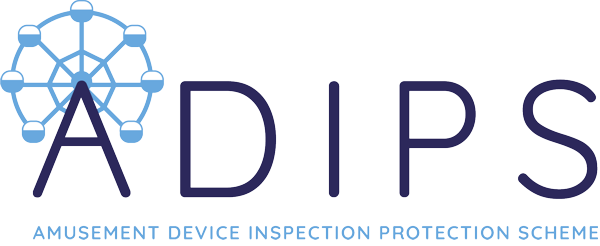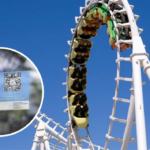Park inspections due on restricted areas around rides
By Carl Hagemann, General Manager, ADIPS

Managing access to restricted and dangerous areas is a major safety topic in the amusements industry and it came up in discussion at the latest Safety Health Awareness Day in Peterborough recently, run for ride operators and controllers by ADIPS and the Amusement Devices Safety Council (ADSC).
So, let’s remind ourselves of the things we need to include in our risk assessments for managing access to these areas?
First of all, HSE advises that your assessment should identify appropriate control measures, such as:
- barriers, railings, fencing and guarding
- interlocks or locking-off points and procedures
- platforms
- steps
- marking danger zones
- notices
- staff training
- supervision
As a qualified safety and health practitioner, I can tell you that you will usually need to use more than one control measure to manage access. HSE is planning around 50 visits to fixed sites in 2024 and they will be looking for robust controls, so consider how comprehensive but also how proportionate your measures are.
Where your control measures include supervision, it is advised that your operators and attendants get the appropriate training. You know that you have responsibility to ensure the safety of your staff as well as the public and this includes making sure a person cannot be struck by the moving parts of a device. Such accidents are mercifully rare now but they have happened in the past and it remains a risk to manage.
Barriers, railings, fencing and guarding
More often than not, the most effective way of preventing access to danger areas or dangerous parts is by installing a suitable barrier. If the barrier protects an edge from which somebody could be injured if they fell, it should comply with relevant standards and should be designed both to prevent people from becoming trapped in or falling through them and to discourage attempts to climb, for example by using vertical rails, says HSE guidelines.
Barriers and fences should be arranged and fixed so that there are no gaps under or between individual parts that people, including young children, could get through and put themselves into a position of danger. We need to keep access points between barriers to the minimum size and number needed for safe loading and unloading as identified by our risk assessments.
At the same time, do not have more access points than you need for the safe operation of the device, nor make them so wide as to defeat the point of having barriers, or make effective supervision of the gap impracticable.
While the device is in motion, prevent people from passing through gaps in barriers unintentionally by placing an attendant at a safe position at each access point or effectively barring the access gaps, and providing the access points with offset barriers/and or steps.
At our recent meeting with HSE, we viewed video footage of a visitor on a ride clipping a barrier with their foot. The barrier had been leant on by a member of the public, pushing it into the safety envelope of the device. The visitor escaped injury but the incident illustrated the importance of ensuring the barriers themselves are safely used. All barriers need to keep people outside the safety envelope of the device. If parts of the ride swing out over public areas, these areas may need to be enclosed where any moving part of the device or a passenger will be less than 2.5 m above the ground, says HSE.
Finally on barriers, periodically check and inspect them to make sure they remain effective.
Other advice on restricted areas
- Highlight danger areas by notices, painted lines etc.
- Provide sufficient supervision to make sure that people do not stray into danger areas.
- Where appropriate, provide a safe area for waiting members of the public and make arrangements to control them. These may include providing additional supervision and/or features such as queuing rails and gates.
- On dark rides, provide emergency exit routes which are well-lit and signed when required.
- Control risks to prevent tripping or falling, particularly where the routes cross or run alongside rail tracks.
This spring and summer will see a series of inspections by HSE across fixed sites, including theme parks. Alongside these visits, ADIPS inspection bodies will be visiting parks also to make sure your rides and other devices are being operated safely. It is a good time, then, to review your safety controls, with a particular focus on how you manage restricted or dangerous areas.
This article was previously published in InterPark Magazine, March 2024
Recent Posts
Archives
- April 2024
- March 2024
- December 2023
- October 2023
- August 2023
- July 2023
- May 2023
- March 2023
- February 2023
- January 2023
- December 2022
- April 2021
- April 2020
- March 2019
- September 2018
- August 2018
- October 2017
- September 2017
- May 2017
- April 2017
- March 2017
- December 2016
- September 2016
- August 2016
- June 2016
- February 2016
- August 2015
- July 2015
- May 2015
- April 2015
- February 2015
- January 2015
- September 2014
- August 2014
- March 2014
- January 2014
- December 2013
- November 2013
- October 2013
- September 2013
- August 2013
- July 2013
- June 2013
- May 2013
- February 2013
- December 2012
- January 2012
- January 2011





